The Higgs boson is the last particle of the Standard Model that has been discovered. Whilst it was postulated as early as in 1967, we had to wait until 2012 for being able to observe the boson in the data recorded at the Large Hadron Collider (the LHC) at CERN.
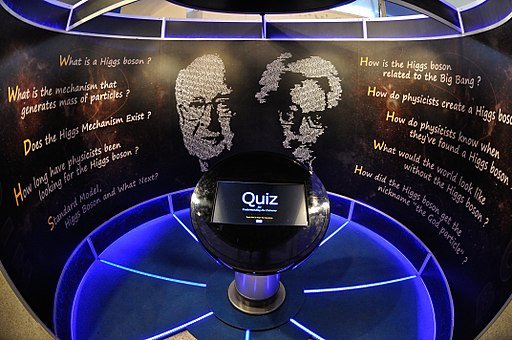
[image credits: Biswarup Ganguly]
However, the Higgs story is not that recent.
Particle physicists were aiming for discovering it since the second half of the last century.
With this post, I am browsing a little bit the Higgs story, from the early searches at the Large Electron-Positron collider times until its discovery five years ago.
Once again, I wanted to publish this article before the steemSTEM meetup inside the LHC. No problem, I am now one month late :D
THE HIGGS BOSON THEORY IN A NUTSHELL
I will not write a full post about the Higgs theory this time. I will instead refer to this recent post of mine and provide a condensed summary.
In a few words, the Standard Model of particle physics is a theory that works extremely well, and it agrees with thousands of measurements.
It is not wrong to tell that this is one of the most tested theories of all time.
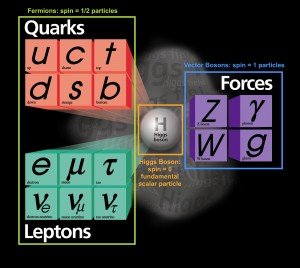
[image credits: Fermilab]
However, the way in which the fundamental interactions are modeled (through some symmetries) does not allow for massive particles.
On the other hand, most particles are known to be massive. We have thus a problem here.
We could have concluded that the Standard Model was just wrong, but these concepts of symmetries worked extremely well. Too well for being directly sent to the graveyard.
The solution comes with the Brout-Englert-Higgs mechanism (tagging @muphy), which allows one both to keep the Standard Model and its underlying concepts and introducing elegantly the particle masses. If this is obscure and if you want to know more, please have a look here. As promised, no detail here ^^
WHERE TO SEARCH: THE HIGGS BOSON MASS ISSUE
So we have a mechanism allowing to keep the Standard almost untouched and introducing elegantly all particle masses. This mechanism however additionally predicts the existence of an extra particle, the Higgs boson, with well defined properties.
This was the missing link of the Standard Model that was searched for during the last decades.
After including the Brout-Englert-Higgs mechanism in the Standard Model, we end up with one extra free parameters in the theory: the mass of the Higgs boson. In a few words, this means that the Higgs boson mass can mostly be anything.
And by anything, I really mean anything. The Higgs could have been super-light or super-heavy. With an upper bound of about 1 TeV (1/13 of the current LHC collision energy) driven by theory.

[image credits: homemade]
Whilst this leaves the door open for many options, this makes the Higgs particle hard to seek, as there are many corners where it could be hidden.
EPISODES 1, 2 AND 3: THE PRE-2012 ERA
Our hunt for the Higgs boson started in the 1990s with the Large Electron Positron collider, also known as the LEP, at CERN, but also with the Tevatron collider at Fermilab.

[image credits: Geni]
The LEP collider was operating in the LHC tunnel (actually, it is the opposite: the LHC has been built inside the LEP tunnel) at the end of the last century.
By smashing accelerated electrons and positrons, this machine was capable to probe light Higgs options.
After slightly more than 10 years of running, all Higgs masses options between 0 and 114 GeV have been excluded.
Only 10% of all options have been probed...
From the 1980s to the end of 2011, another collider, the Tevatron at Fermilab, close to Chicago, was probing more massive options. This machine was smashing very energetic protons and very energetic antiprotons, at an energy equal to about 1/7 of the current LHC energy.
Once again, no discovery in the US (fun fact: no Standard Model boson has been discovered in the US).
And of course, the LHC was also running between 2009 and 2011. Here again, a big chunk of the options were found not possible because of data.
To make a 30 years-story short, we have this summary:
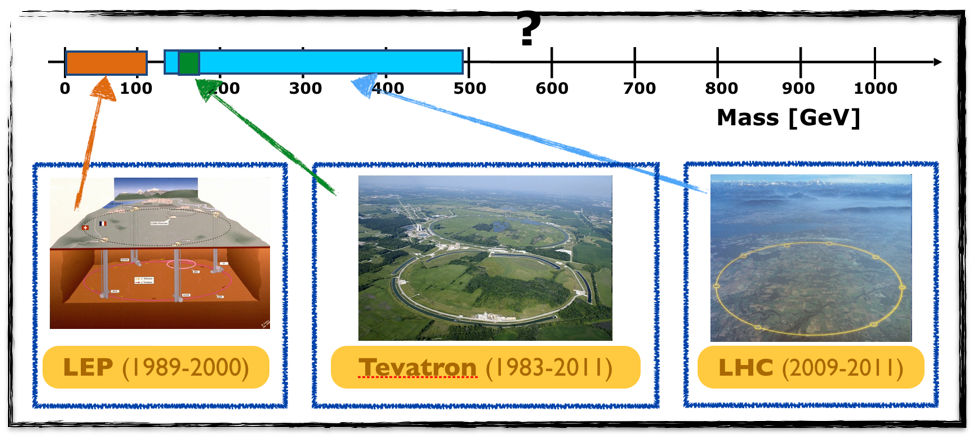
[image credits: homemade]
The LEP exclusion is shown in orange, the Tevatron exclusion is shown in green and the LHC exclusion is shown in blue.
Not even half of the options were covered in less 30 years…
THE DISCOVERY
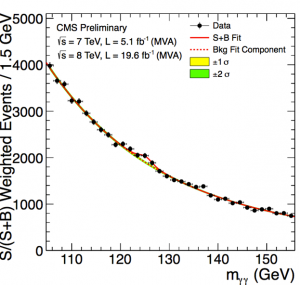
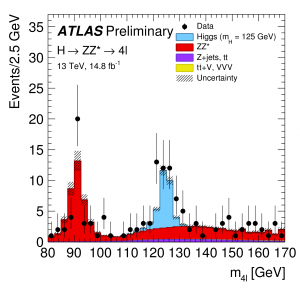
[image credits: the CMS and ATLAS collaborations]
In 2012, things have changed as both the ATLAS and CMS collaborations of the LHC have observed something in the hole between the orange and blue area above. A Higgs boson! And one year later, a Nobel prize!
At this stage, it was a Higgs boson and not the Higgs boson. To be sure that the newly discovered guy is the Standard Model Higgs boson, its properties have to be measured precisely. All its properties.
ALL! And interestingly enough, the LHC will not be sufficient for that. For this reason, physicists are discussing today the next experimental move, i.e. what to do in 15-20 years from now! And Higgs physics is at the heart of these discussions.
SteemSTEM
SteemSTEM is a community-driven project that now runs on Steemit for more than a year. We seek to build a community of science lovers on Steemit and to promote well written/informative Science Technology Engineering and Mathematics (STEM) postings in order to make Steemit a place for fascinating STEM content.
More information can be found on the @steemstem blog and on our discord server and in our last project report.
